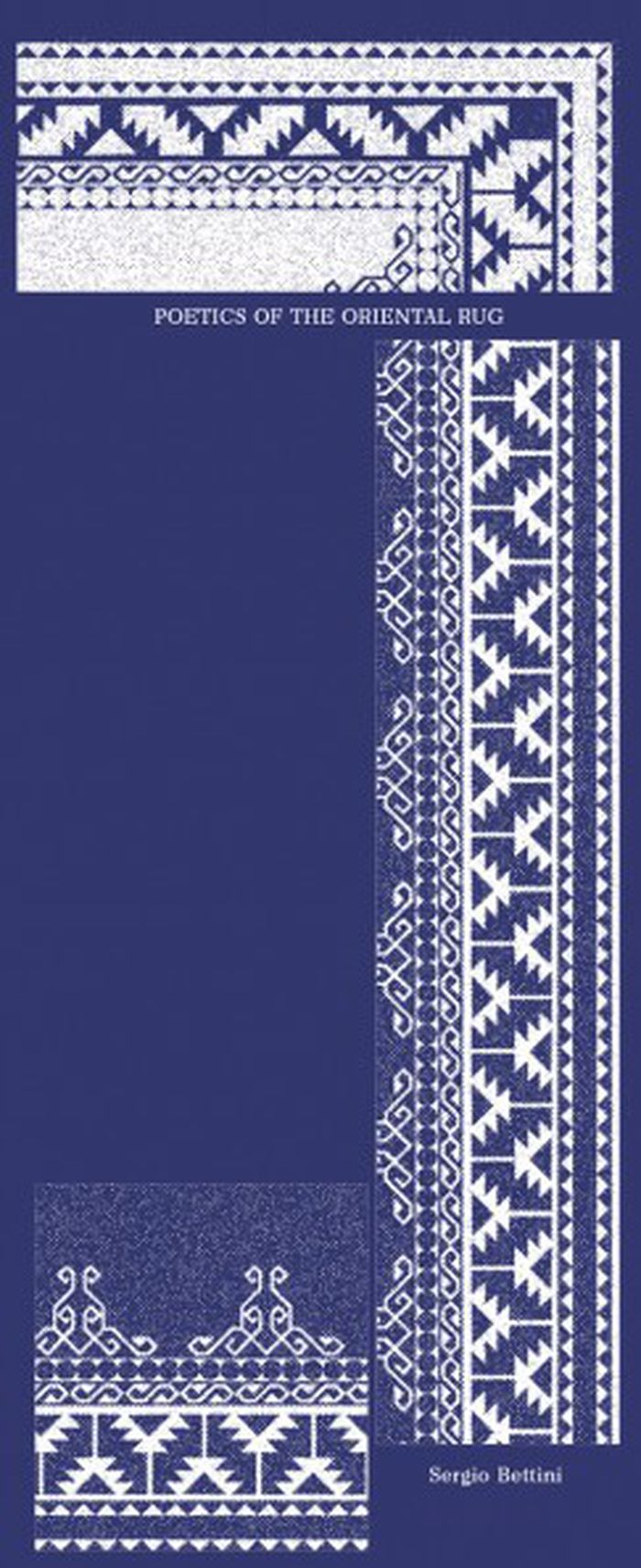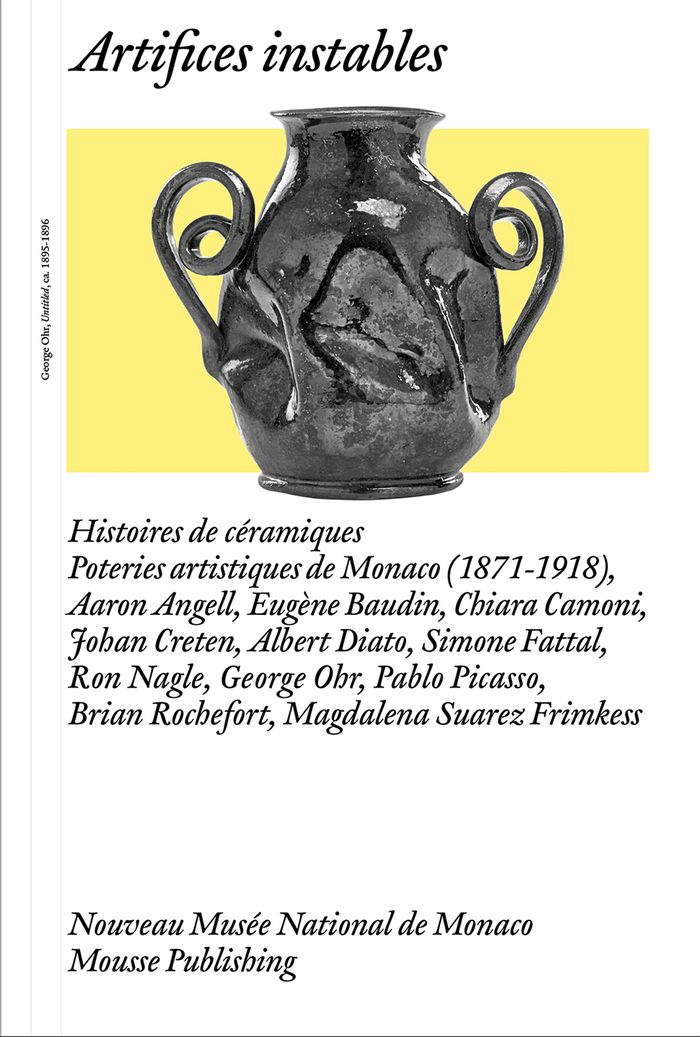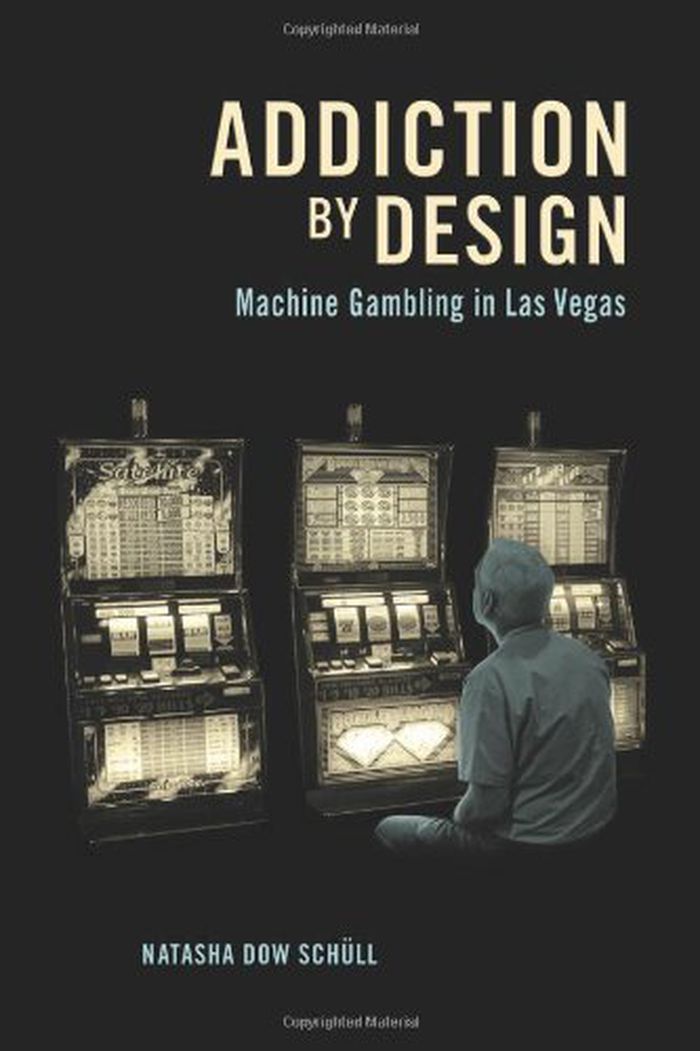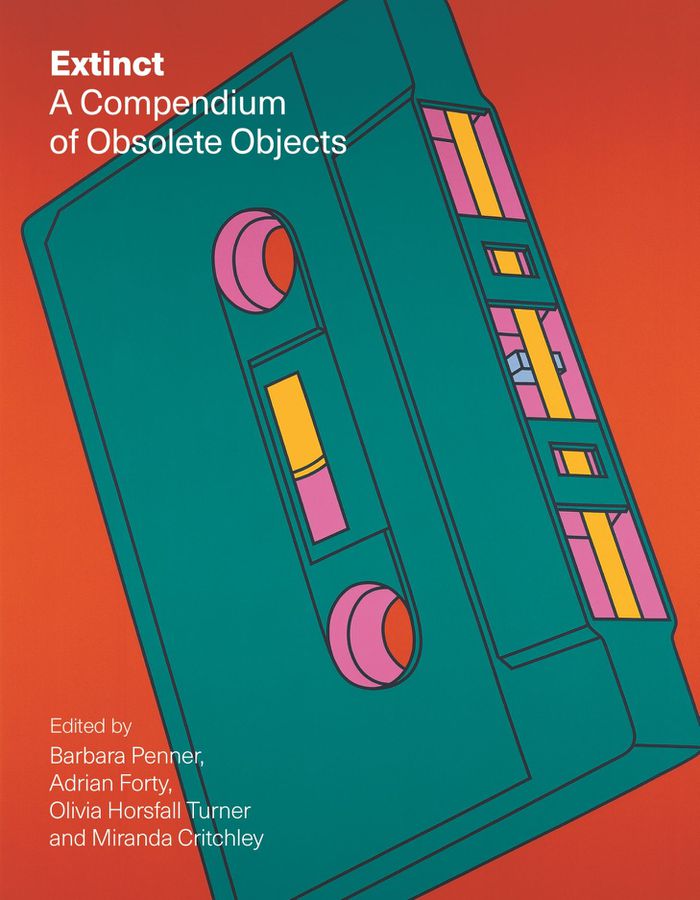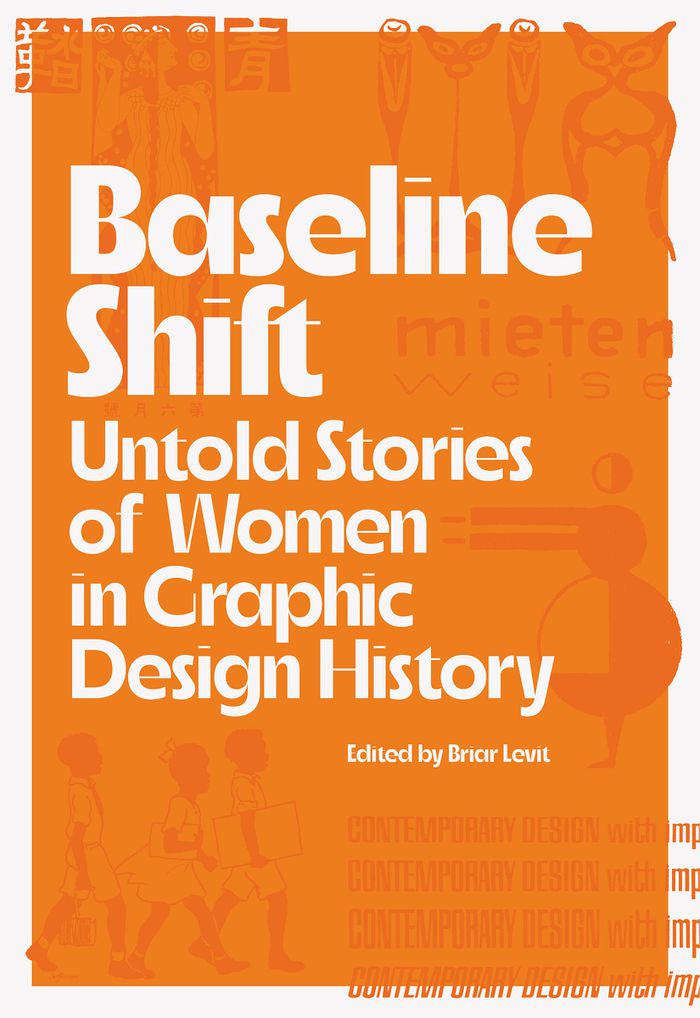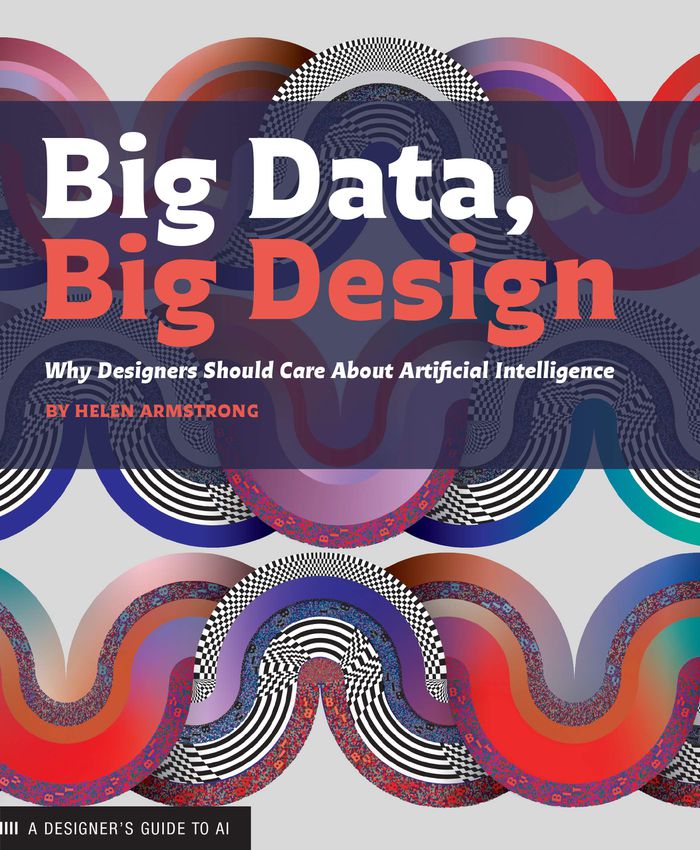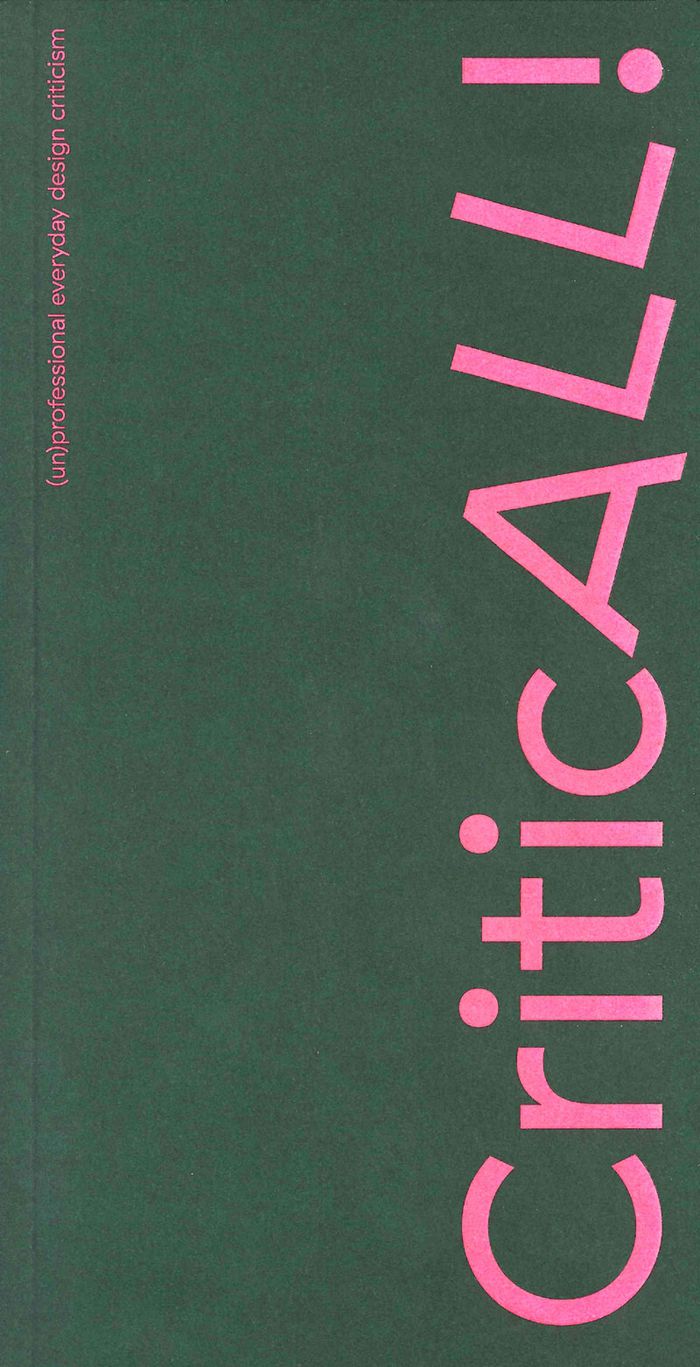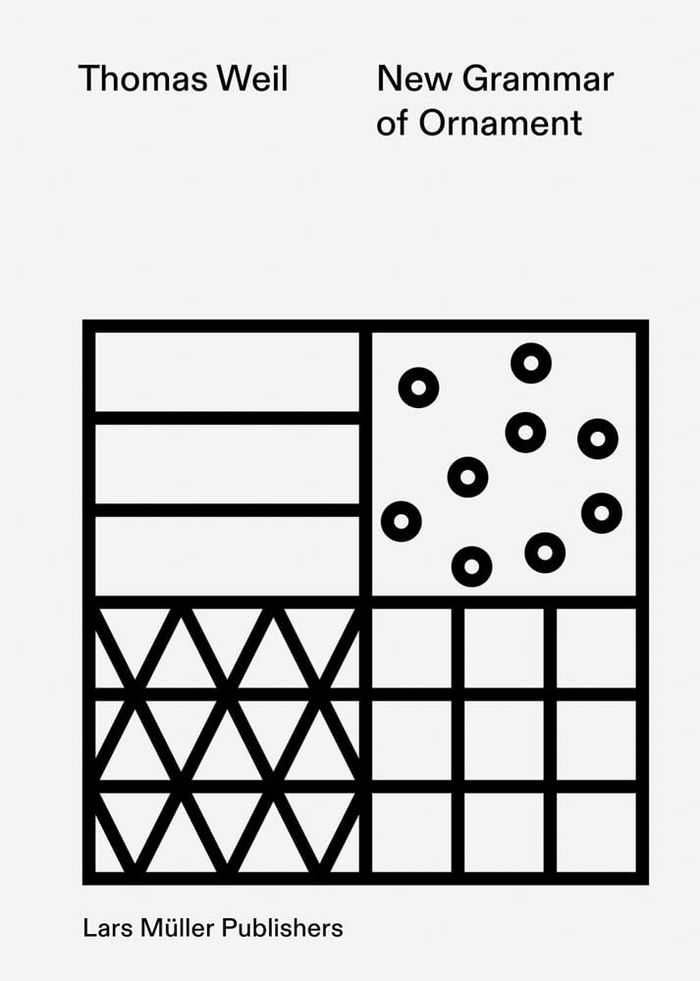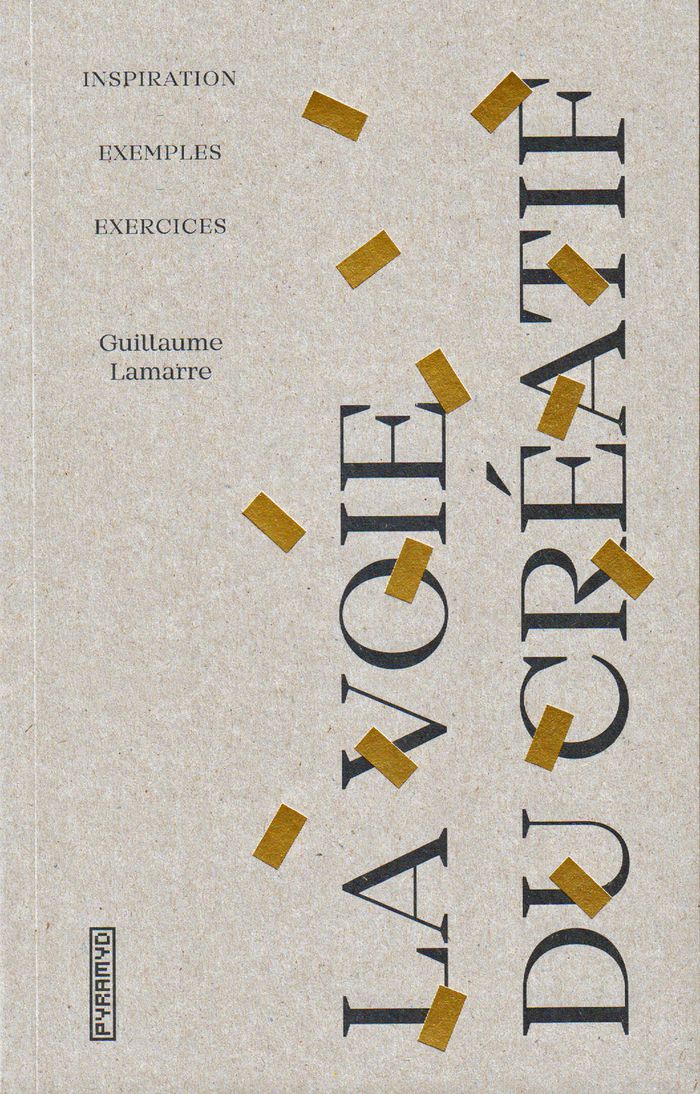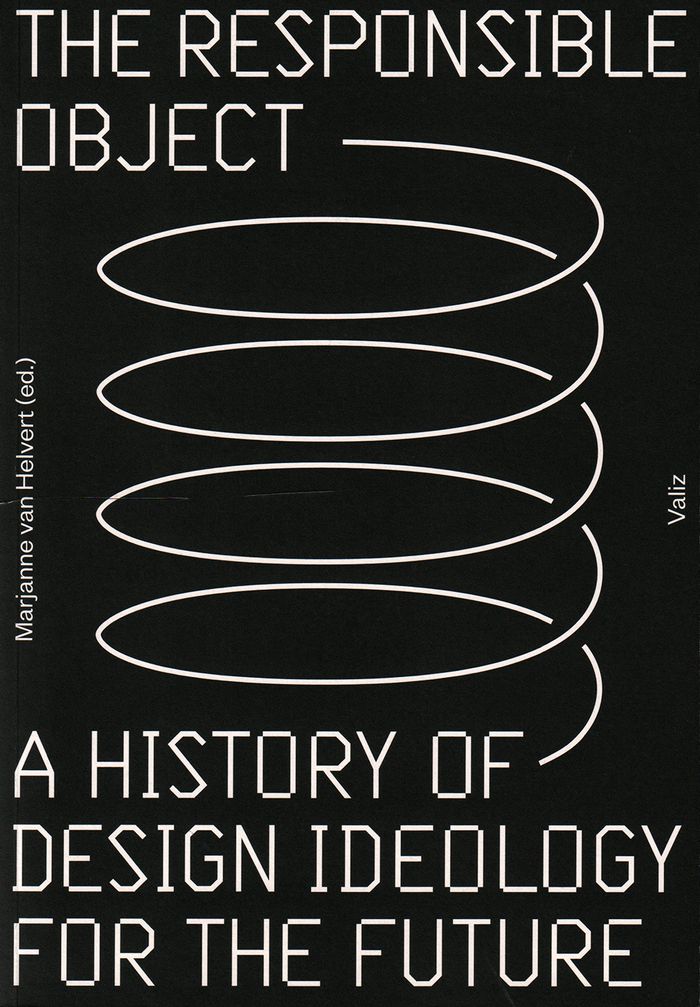Poetics of the oriental rug
$19.95
(available in store)
Summary:
‘Poetics of the Oriental Rug’ is published as a supplement to 'MacGuffin Magazine 9: The Rug'. It is the transcript of a seminal lecture entitled Poetica del tappeto orientale and delivered at the University of Padua in the early 1960s by Italian art historian Sergio Bettini (1905–1986).
Poetics of the oriental rug
Actions:
Price:
$19.95
(available in store)
Summary:
‘Poetics of the Oriental Rug’ is published as a supplement to 'MacGuffin Magazine 9: The Rug'. It is the transcript of a seminal lecture entitled Poetica del tappeto orientale and delivered at the University of Padua in the early 1960s by Italian art historian Sergio Bettini (1905–1986).
Design Theory
$75.00
(available to order)
Summary:
Un parcours d'inventions et d'expérimentations à travers plus de 200 pièces d'artistes internationaux, observant la diversité non seulement des formes et des décors, mais aussi des processus de fabrication de la céramique.
Artifices instables – Histoires de céramiques
Actions:
Price:
$75.00
(available to order)
Summary:
Un parcours d'inventions et d'expérimentations à travers plus de 200 pièces d'artistes internationaux, observant la diversité non seulement des formes et des décors, mais aussi des processus de fabrication de la céramique.
Design Theory
$35.95
(available to order)
Summary:
Drawing on fifteen years of field research in Las Vegas, anthropologist Natasha Dow Schüll shows how the mechanical rhythm of electronic gambling pulls players into a trancelike state they call the "machine zone," in which daily worries, social demands, and even bodily awareness fade away. Once in the zone, gambling addicts play not to win but simply to keep playing, for(...)
Addiction by design: machine gambling in Las Vegas
Actions:
Price:
$35.95
(available to order)
Summary:
Drawing on fifteen years of field research in Las Vegas, anthropologist Natasha Dow Schüll shows how the mechanical rhythm of electronic gambling pulls players into a trancelike state they call the "machine zone," in which daily worries, social demands, and even bodily awareness fade away. Once in the zone, gambling addicts play not to win but simply to keep playing, for as long as possible?even at the cost of physical and economic exhaustion. In continuous machine play, gamblers seek to lose themselves while the gambling industry seeks profit. Schüll describes the strategic calculations behind game algorithms and machine ergonomics, casino architecture and "ambience management," player tracking and cash access systems?all designed to meet the market's desire for maximum "time on device." Her account moves from casino floors into gamblers' everyday lives, from gambling industry conventions and Gamblers Anonymous meetings to regulatory debates over whether addiction to gambling machines stems from the consumer, the product, or the interplay between the two. ''Addiction by design'' is a compelling inquiry into the intensifying traffic between people and machines of chance, offering clues to some of the broader anxieties and predicaments of contemporary life. At stake in Schüll's account of the intensifying traffic between people and machines of chance is a blurring of the line between design and experience, profit and loss, control and compulsion.
Design Theory
$59.95
(available to order)
Summary:
So-called extinct objects are those that were imagined but were never in use, or that existed but are now unused—superseded, unfashionable, or simply forgotten. Extinct gathers together an exceptional range of artists, curators, architects, critics, and academics, including Hal Foster, Barry Bergdoll, Deyan Sudjic, Tacita Dean, Emily Orr, Richard Wentworth, and many more.(...)
Design Theory
December 2021
Extinct: a compendium of obsolete objects
Actions:
Price:
$59.95
(available to order)
Summary:
So-called extinct objects are those that were imagined but were never in use, or that existed but are now unused—superseded, unfashionable, or simply forgotten. Extinct gathers together an exceptional range of artists, curators, architects, critics, and academics, including Hal Foster, Barry Bergdoll, Deyan Sudjic, Tacita Dean, Emily Orr, Richard Wentworth, and many more. In eighty-five essays, contributors nominate ''extinct'' objects and address them in a series of short, vivid, sometimes personal accounts, speaking not only of obsolete technologies, but of other ways of thinking, making, and interacting with the world. ''Extinct'' is filled with curious, half-remembered objects, each one evoking a future that never came to pass. It is also a visual treat, full of interest and delight.
Design Theory
$39.95
(available to order)
Summary:
''Baseline shift'' centers diverse women across backgrounds whose work has shaped, shifted, and formed graphic design as we know it today. From an interdisciplinary book designer and calligrapher starting out in Harlem''s Renaissance, to the invisible drafters of Monotype''s drawing office, the women represented here include auteurs, advocates for social justice, and(...)
Baseline shift: untold stories of women in graphic design history
Actions:
Price:
$39.95
(available to order)
Summary:
''Baseline shift'' centers diverse women across backgrounds whose work has shaped, shifted, and formed graphic design as we know it today. From an interdisciplinary book designer and calligrapher starting out in Harlem''s Renaissance, to the invisible drafters of Monotype''s drawing office, the women represented here include auteurs, advocates for social justice, and creators ahead of their time. The fifteen essays in this illustrated collection come from contributors with a variety of backgrounds and perspectives. ''Baseline shift'' is essential reading for students and practitioners of graphic design, as well as anyone with an interest in women''s history.
Design Theory
Big data, big design
$42.95
(available to order)
Summary:
Enter the world of Machine Learning (ML) and Artificial Intelligence (AI) through a design lens in this thoughtful handbook of practical skills, technical knowledge, interviews, essays, and theory, written specifically for designers. Gain an understanding of the design opportunities and design biases that arise when using predictive algorithms. Learn how to place design(...)
Big data, big design
Actions:
Price:
$42.95
(available to order)
Summary:
Enter the world of Machine Learning (ML) and Artificial Intelligence (AI) through a design lens in this thoughtful handbook of practical skills, technical knowledge, interviews, essays, and theory, written specifically for designers. Gain an understanding of the design opportunities and design biases that arise when using predictive algorithms. Learn how to place design principles and cultural context at the heart of AI and ML through real-life case studies and examples. This portable, accessible guide will give beginners and more advanced AI and ML users the confidence to make reasoned, thoughtful decisions when implementing ML design solutions.
Design Theory
$24.50
(available to order)
Summary:
From Google reviews to YouTube tutorials, and from online service desks to real-life ‘may I speak to the manager’ requests - we are all critics of our designed environment. It seems therefore strange, if not outrageous, that design criticism is a practice considered to be a haute-for-few instead of a low-for-all. Design belongs to all of us and, therefore, its criticism(...)
CriticAll!: (Un)professional everyday design criticism
Actions:
Price:
$24.50
(available to order)
Summary:
From Google reviews to YouTube tutorials, and from online service desks to real-life ‘may I speak to the manager’ requests - we are all critics of our designed environment. It seems therefore strange, if not outrageous, that design criticism is a practice considered to be a haute-for-few instead of a low-for-all. Design belongs to all of us and, therefore, its criticism as well. How can we activate more people to become actively aware of and critical towards their designed environments?
Design Theory
New grammar of ornament
$61.00
(available to order)
Summary:
Ornaments are omnipresent: they can be found on buildings, fabrics, jewelry, tiles, ceramics and wallpaper. Scorned at the outset of the modern age, ornament has long since returned to architecture and influences design drafts as much as tattoo motifs. In ''New grammar of ornament,'' German architect and designer Thomas Weil compares current ornamental objects with the(...)
New grammar of ornament
Actions:
Price:
$61.00
(available to order)
Summary:
Ornaments are omnipresent: they can be found on buildings, fabrics, jewelry, tiles, ceramics and wallpaper. Scorned at the outset of the modern age, ornament has long since returned to architecture and influences design drafts as much as tattoo motifs. In ''New grammar of ornament,'' German architect and designer Thomas Weil compares current ornamental objects with the results of archaeological research on ornamental artifacts, and concludes that there is an anthropological constant. From the recurring arrangements of stripes, rectangles, triangles and dots and the frequency of the forms of floral ornaments used, he derives a new 'grammar of ornament.' More than 160 years after Owen Jones' publication of that name, ''New grammar of ornament'' is a new reference work. It categorizes the variety of ornamental forms used worldwide and places them in a major art and cultural-historical context.
Design Theory
$29.95
(available to order)
Summary:
Cet ouvrage propose trente directions à suivre, trente conseils pertinents, développés, étayés d’exemples précis, documentés et terminés par un exercice de créativité. Depuis la conservation du regard du débutant jusqu’à la nécessaire obstination, en passant par la référence à des héros, c’est la vie créative dans son ensemble qui est étudiée. Dessin, musique, art(...)
La voie du créatif: inspiration, exemples, exercices
Actions:
Price:
$29.95
(available to order)
Summary:
Cet ouvrage propose trente directions à suivre, trente conseils pertinents, développés, étayés d’exemples précis, documentés et terminés par un exercice de créativité. Depuis la conservation du regard du débutant jusqu’à la nécessaire obstination, en passant par la référence à des héros, c’est la vie créative dans son ensemble qui est étudiée. Dessin, musique, art graphique, sport, industrie... les domaines d’applications sont divers, et les exemples tout autant.
Design Theory
$39.50
(available to order)
Summary:
Today, we live in an economic system that revolves around producing and consuming objects made of plastic and metal, electronics, synthetic textiles and other things that do not decompose within a foreseeable amount of time. We start to review the role of these objects in a series of challenges that lie ahead of us. In the design discipline, sustainability and social(...)
The responsible object; a history of the design ideology for the future
Actions:
Price:
$39.50
(available to order)
Summary:
Today, we live in an economic system that revolves around producing and consuming objects made of plastic and metal, electronics, synthetic textiles and other things that do not decompose within a foreseeable amount of time. We start to review the role of these objects in a series of challenges that lie ahead of us. In the design discipline, sustainability and social responsibility have become prolific epithets, generating new products, materials, and technologies, designed to change the course of our future. The intrinsic design ideologies are often not new, but form a fundamental part of design history, reappearing throughout the previous centuries. This book presents a history of socially committed design strategies within the western design tradition, from William Morris to Victor Papanek, and from VKhUTEMAS to FabLab. A critical resource for designers, students, cultural critics, and anyone interested in building a sustainable future.
Design Theory
